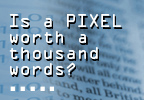



The need to be explicit in offering new media composition opportunities
As evidenced by the analysis of course syllabi, more opportunities for engaging in new media composition are needed. This demonstrated dearth underscores the call from other scholars for greater inclusion of mutlimodal composition in the college classroom (Cope and Kalantzis 2000; Hayles 2002; and Williams 2001a, 2001b). Further, these increased opportunities must be explicitly stated on course documents and actively discussed in class given the conflicting perceptions of graduate students regarding instructor comfort levels with accepting new media projects [video, 2:09]. In essence, perception is reality. Graduate students will continue to shy away from creating new media scholarship until they see instructors as more willing to value these digital projects.
But there may be more reality to this perception han we care to admit. As Steve Westbrook notes:
Furthermore, because the essay has enjoyed such a longstanding tradition as composition’s preferred genre and, in turn, because we have grown so accustomed to grading the essay, we tend to feel more secure evaluating this from of writing than others even though our criteria may too often remain tacit and the codes and conventions that govern essay-writing may be no more sophisticated or complex than those governing writing in other genres (2006, 467).
Ironically,while some students doubt their skill level, others have professional skill sets and previous educational experiences that allow them to compose effective new media compositions. In the absence of a required digital composition, providing an explicit option for new media projects offers less-comfortable instructors with an opportunity to become more familiar with the genre. While some formal programs directly pair faculty with students in the development of digital media to build staff capacity (Metros and Woolsey 2006), this informal option could provide periodic exposure to the possibilities of new media scholarship and serve as an introduction to the genre for instructors.
Conclusions • Key factors and supports • Emerging questions • Home